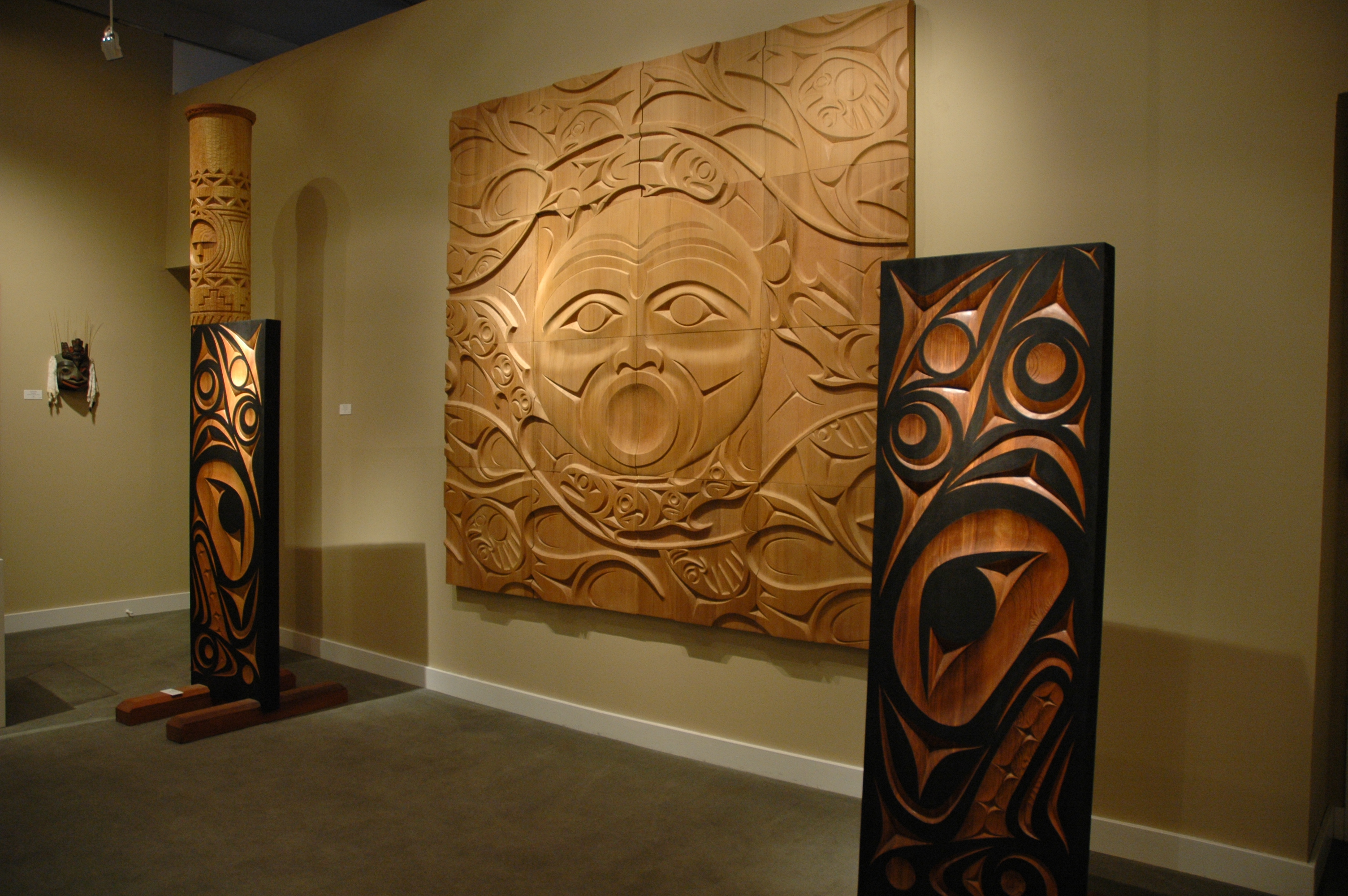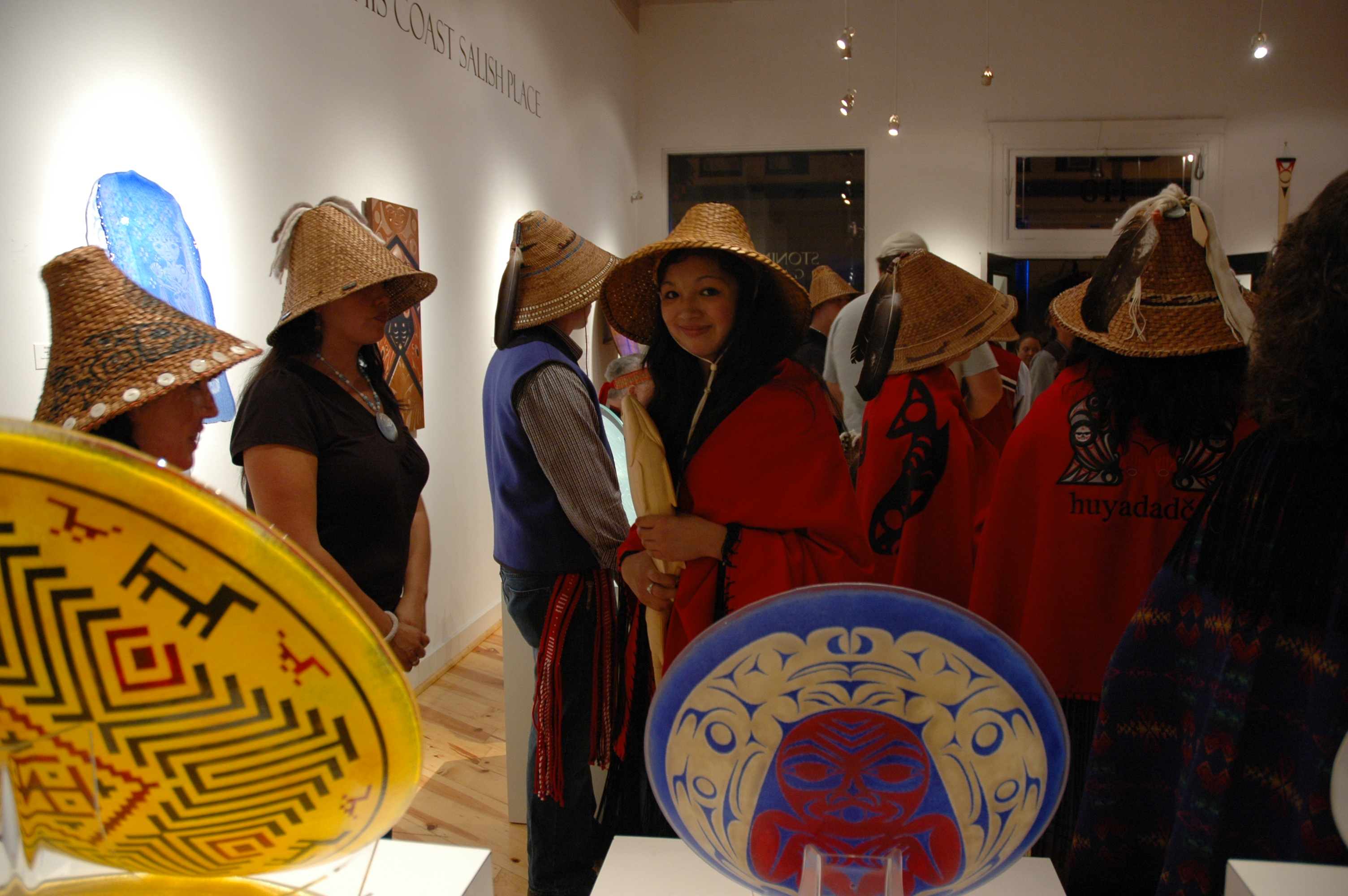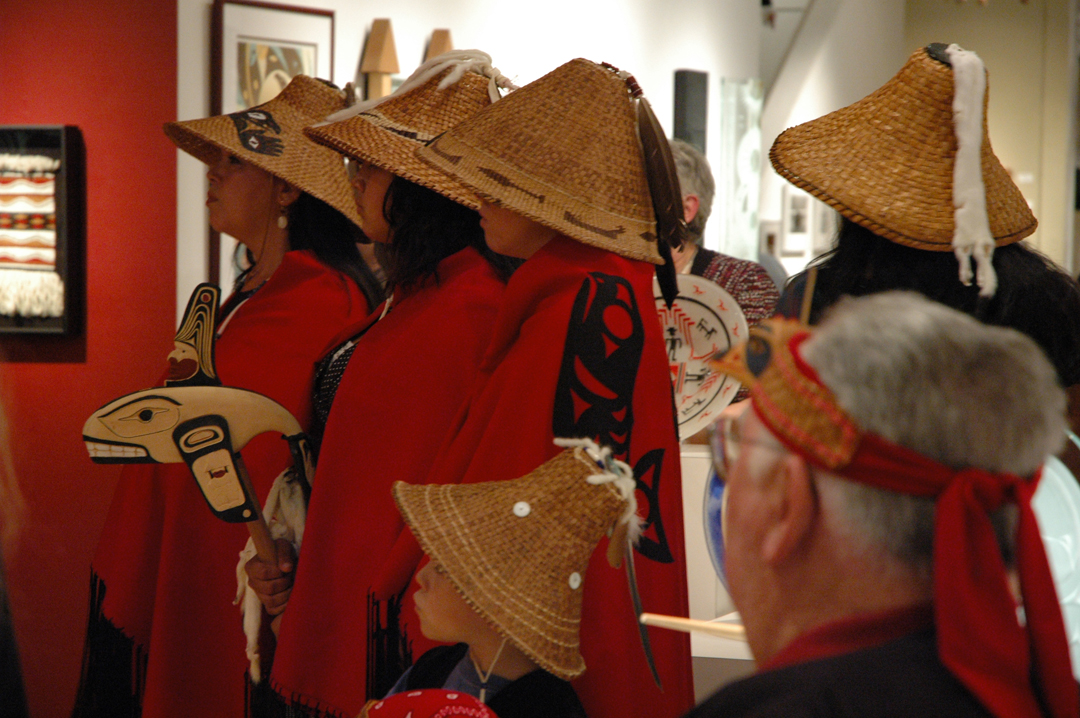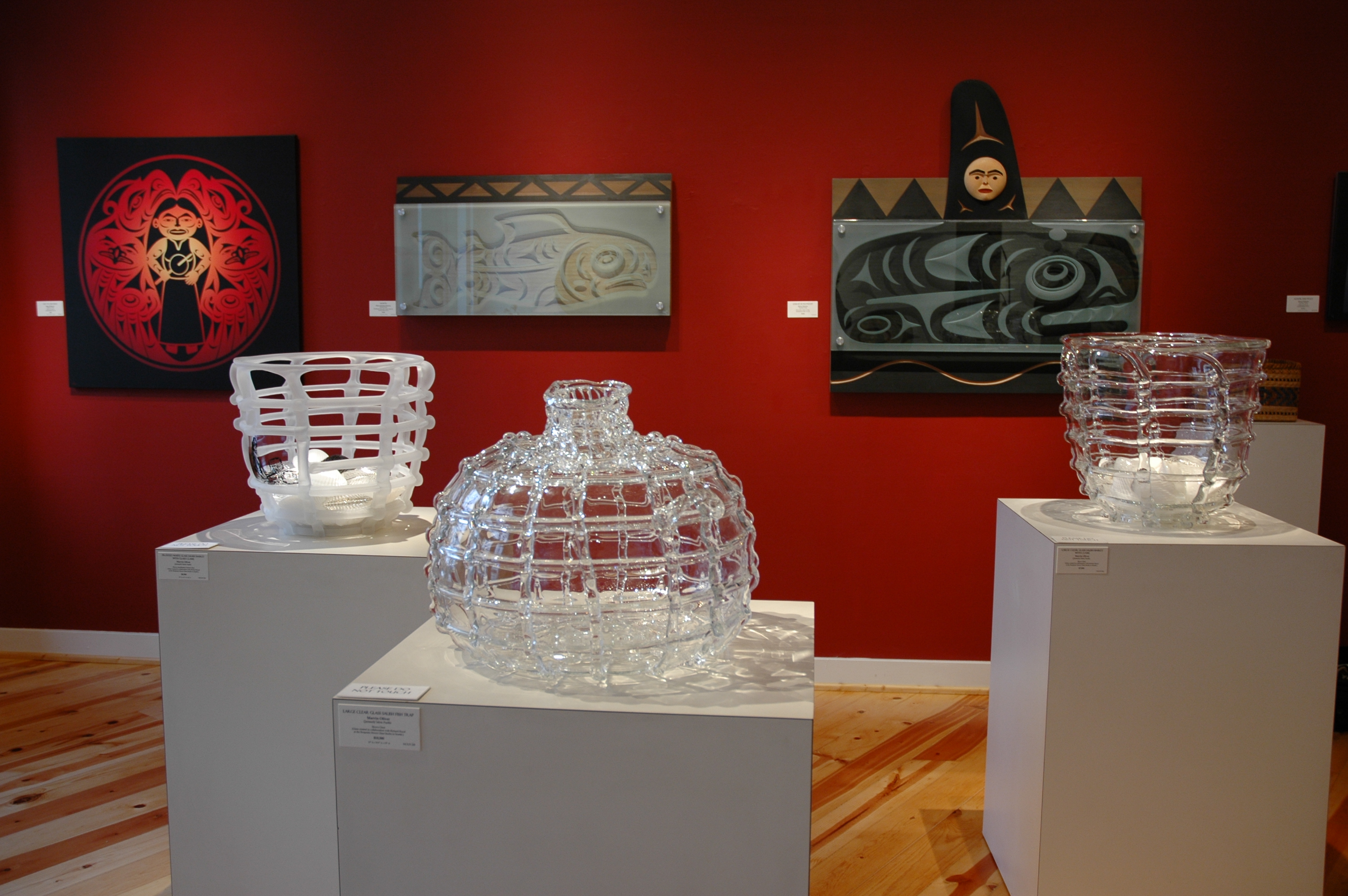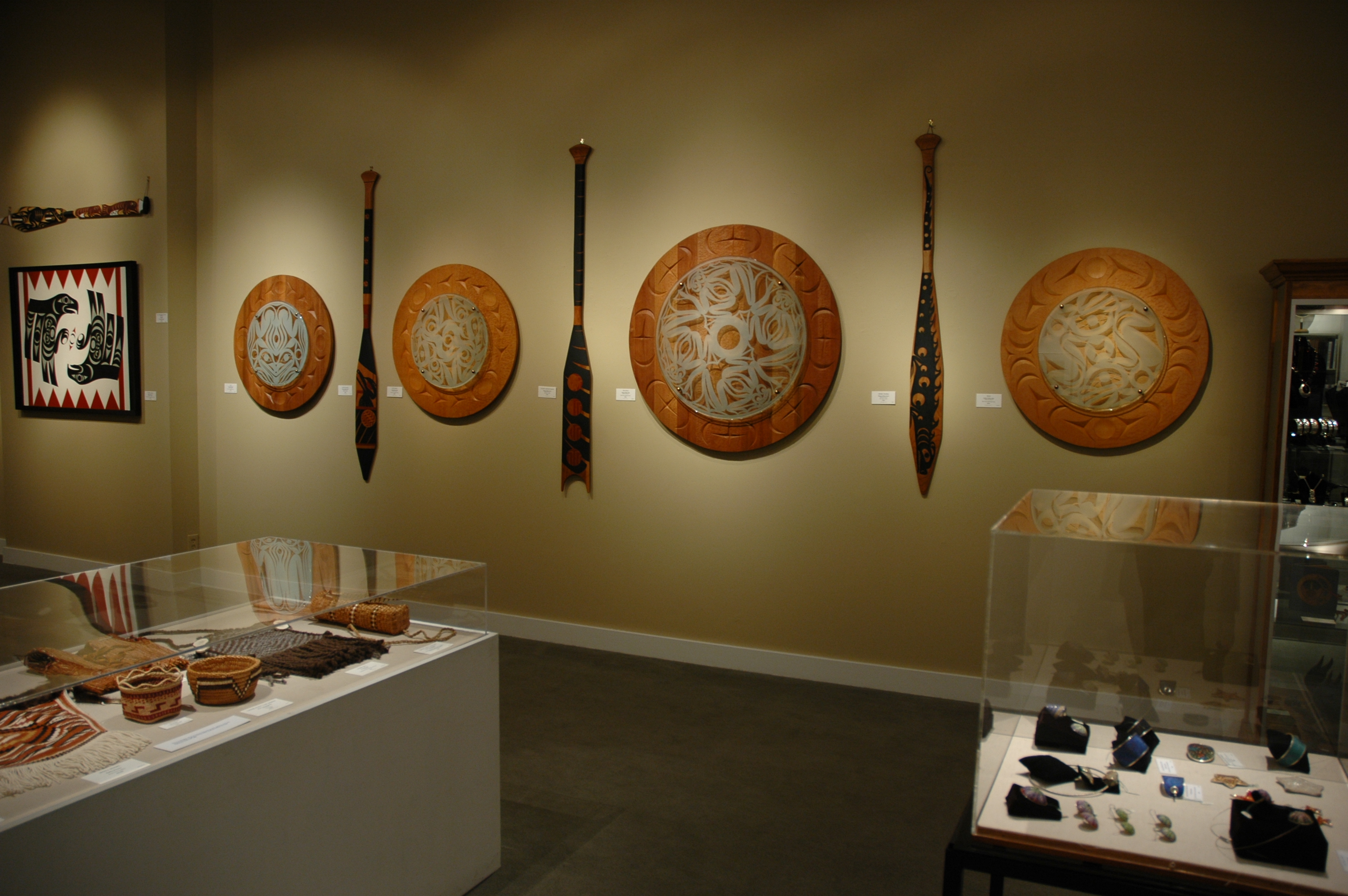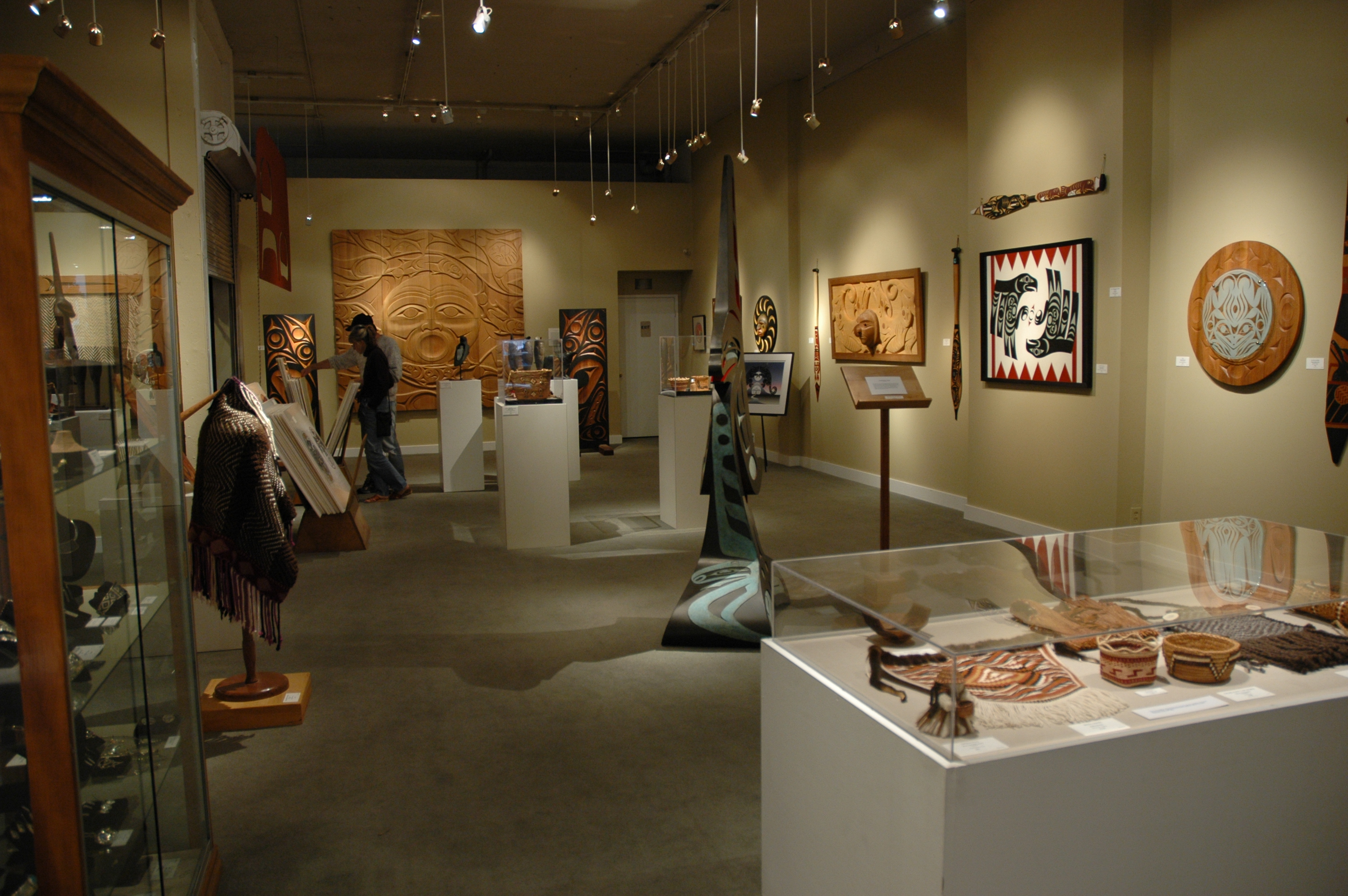A Group Exhibition
This Coast Salish Place is the Stonington Gallery’s third exhibition to focus exclusively on the profoundly gratifying cultural renaissance taking place within our regional Coast Salish tribal communities. Coast Salish is a linguistic term and refers to the language historically spoken by most of the Puget Sound and Frasier River First Peoples. The passion, time, commitment, and education that have propelled this cultural renaissance are exemplified in This Coast Salish Place.
Leading artists include: Jason Gobin, (Tulalip), Maynard Johnny, Jr. (Penelakut), Marvin Oliver (Quinault), Betty Pasco (Suquamish), Duane Pasco (Non-Indigenous), Shaun Peterson (Puyallup/Tulalip), Susan Point (Musqueam), Andy and Ruth Peterson (Skokomish), Andrea Wilbur-Sigo (Skokomish/Squaxin), Malynn Wilbur Foster (Skokomish), Mike Foster (Non-Indigenous), Bunny Wilbur-Bluebird (Skokomish/Squaxin), Susan Pavel (Non-Indigenous), and Dale Faulstich (Non-Indigenous).
Exhibition Dates:
October 2, 2008 - November 30, 2008Involved Artists:
Jason Gobin, Marvin Oliver, Andy Peterson, Malynn Foster, Fran and Bill James, Maynard Johnny, Jr., Bunny Wilbur-Bluebird, Dale Faulstich, Heather Johnson Jock, Jane Marston, Adam McIsaac, Betty Pasco, Susan Pavel, Qwalsius–Shaun Peterson, Susan Point, Karen Reed, Andrea Wilbur-Sigo,
Featured Works
-
 Maynard Johnny, Jr.Salmon Run BoxYellow Cedar, Red Cedar, Acrylic
Maynard Johnny, Jr.Salmon Run BoxYellow Cedar, Red Cedar, Acrylic- 8.75"h
- 7.5"w
- 7.5"d
SOLD -
 Karen ReedWabutt – Double Walled BasketRed Cedar Bark, Yellow Cedar, Red Cedar, Sweet Grass, Flax Dye from New Zealand
Karen ReedWabutt – Double Walled BasketRed Cedar Bark, Yellow Cedar, Red Cedar, Sweet Grass, Flax Dye from New Zealand- 8"h
- 11"w
- 11"d
SOLD -
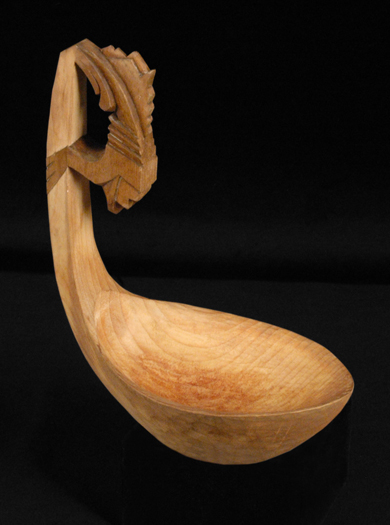 Zoomorphic Columbia River LadleRed Alder
Zoomorphic Columbia River LadleRed Alder- 8"h
- 4"w
- 6.5"d
SOLD -
 Qwalsius -Shaun PetersonThe Salmon PeopleLimited Edition Giclee
Qwalsius -Shaun PetersonThe Salmon PeopleLimited Edition Giclee- 24"h
- 24"w
SOLD -
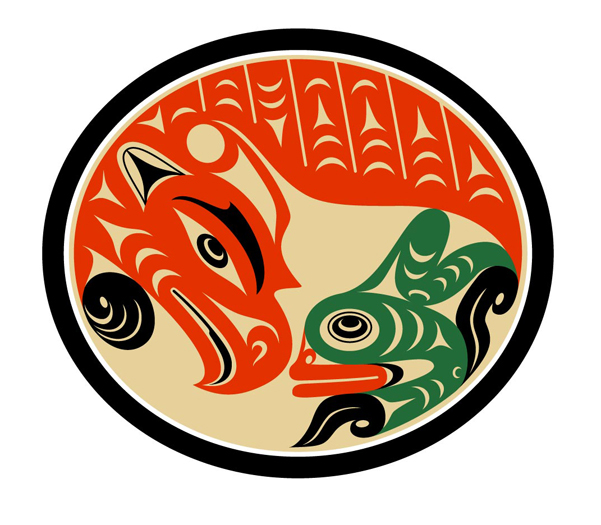 Qwalsius -Shaun PetersonMeeting in SecretLimited Edition Giclee
Qwalsius -Shaun PetersonMeeting in SecretLimited Edition Giclee- 14"h
- 15"w
SOLD -
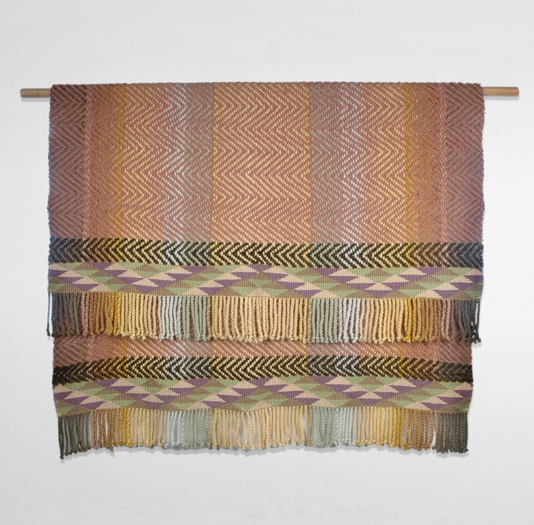 Susan PavelThe Splendor of SpringYarn Hand-dyed with Indigenous Plants; Woven both Twill and Twined; Sold with Carved Cedar Blanket Rack (By Shaunte Bernal)
Susan PavelThe Splendor of SpringYarn Hand-dyed with Indigenous Plants; Woven both Twill and Twined; Sold with Carved Cedar Blanket Rack (By Shaunte Bernal)- 70"h
- 48"w
SOLD -
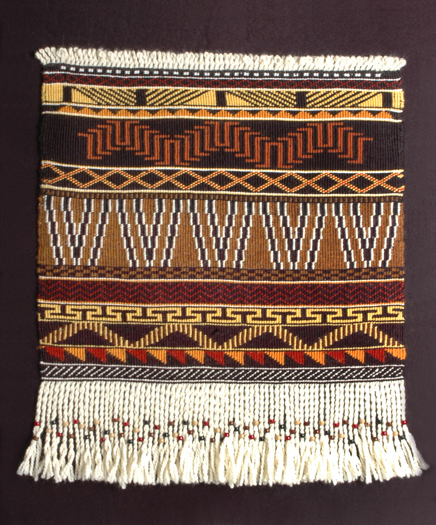 Betty PascoBasket Design SamplerFramed Wool Weaving (dimensions are of frame)
Betty PascoBasket Design SamplerFramed Wool Weaving (dimensions are of frame)- 30.75"h
- 24.75"w
- 2.75"d
SOLD -
 Jane MarstonKingfisher and Starfish PaddleYellow Cedar, Acrylic, Abalone
Jane MarstonKingfisher and Starfish PaddleYellow Cedar, Acrylic, Abalone- 60"h
- 6"w
- 1.5"d
SOLD -
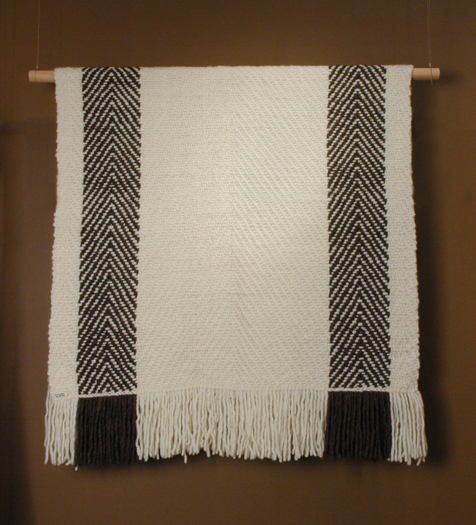 Fran and Bill JamesDouble Brown Stripe Salish BlanketHandspun Wool
Fran and Bill JamesDouble Brown Stripe Salish BlanketHandspun Wool- 80"h
- 43.5"w
- .25"d
SOLD -
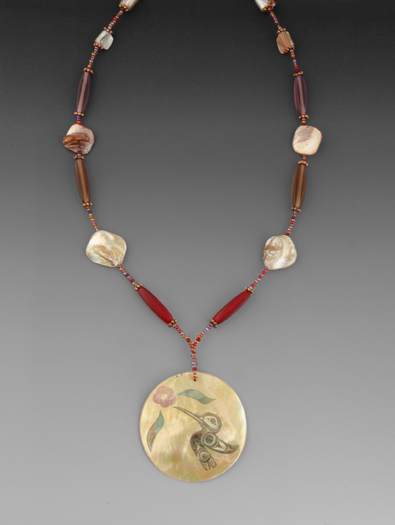 Malynn FosterHummingbirdCzech and Polish Glass Beads, Copper, Mother-of-pearl
Malynn FosterHummingbirdCzech and Polish Glass Beads, Copper, Mother-of-pearl- 2"h
- 2"w
SOLD -
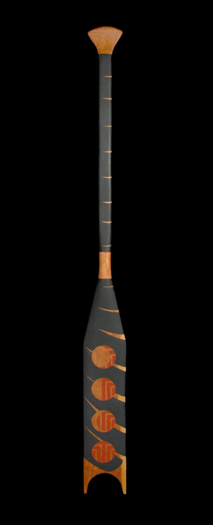 Malynn FosterCrow’s Harvest MoonCherry, Acrylic - Collaboration with Mike Foster
Malynn FosterCrow’s Harvest MoonCherry, Acrylic - Collaboration with Mike Foster- 69"h
- 6.25"w
- 1"d
SOLD -
 Jane MarstonWolf, Killerwhale and Salmon PaddleYellow Cedar, Acrylic, Operculum, Abalone, Copper, Black Twine
Jane MarstonWolf, Killerwhale and Salmon PaddleYellow Cedar, Acrylic, Operculum, Abalone, Copper, Black Twine- 62"h
- 6.5"w
- 1"d
SOLD -
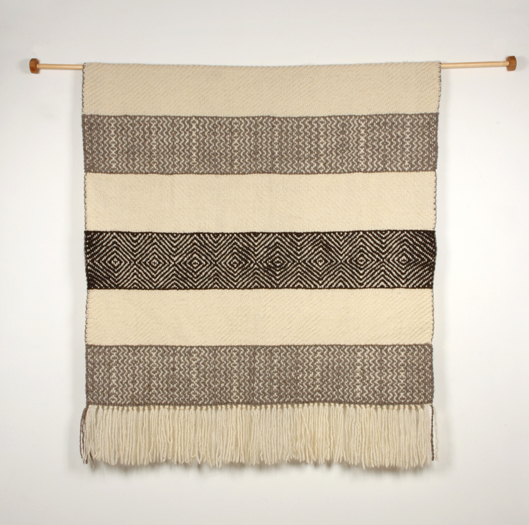 Heather Johnson JockSalish BlanketSheep Wool
Heather Johnson JockSalish BlanketSheep Wool- 76"h
- 54"w
SOLD -
 Susan PointDiscoveryLimited Edition Serigraph
Susan PointDiscoveryLimited Edition Serigraph- 33"h
- 20"w
Contact to Special Order -
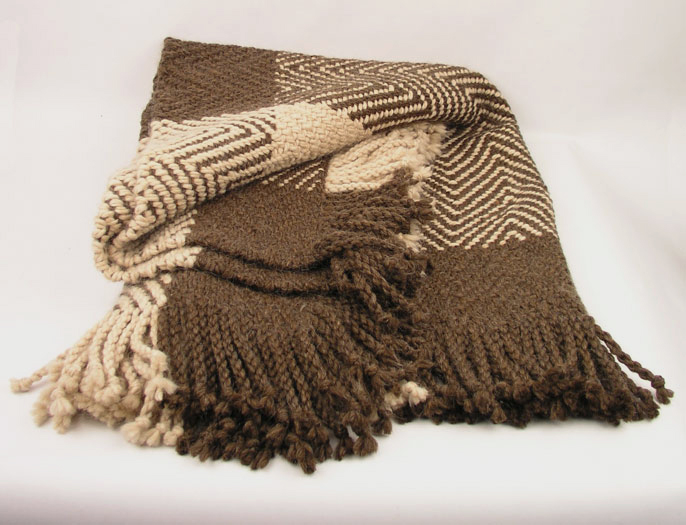 Susan PavelSalish Style Robe: Brown & BeigeWool
Susan PavelSalish Style Robe: Brown & BeigeWool- 61"h
- 37"w
- 1"d
SOLD -
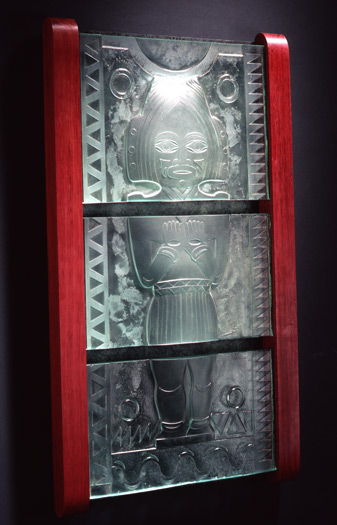 Susan PointSeattle House Post I/ICarved, Kiln-Slumped, Fire-Polished, Glass, Purple Heart
Susan PointSeattle House Post I/ICarved, Kiln-Slumped, Fire-Polished, Glass, Purple Heart- 31"h
- 17.5"w
- 2.25"d
SOLD
Historically, the Coast Salish were recognized on the broader Pacific Northwest Coast for their exceptional weaving skills. Appropriately, the spark igniting the Coast Salish renaissance was lit by elder weavers working closely with students to pass on the vast cultural knowledge that is required of weavers. This Coast Salish Place features basket and blanket weavings, as well as both glass and wood sculpture. These contemporary pieces are inspired by traditional weaving designs and yarn-making tools called spindle whorls. Spindle whorls would have been made by men, who engraved or carved a design into the whorl. Their wives would then use them as tools, spinning Mountain Goat and dog fur around the long spindle to make yarn for weaving. When the weaver spun her wool the whorl would spin, thus animating the carved design. Contemporary Coast Salish artists frequently adapt the concept of spindle whorls to honor the ancient tradition of their culture. The Coast Salish artists in the exhibition are dispersed between the rural, more isolated reservation communities and the urban centers of Vancouver, B.C. and Seattle, WA. It is interesting to note the influence of environment on the work and how the changing landscape imbues this ancient art tradition with vestiges of this time and place. Each generation makes their contribution to cultural art, and many of this generation’s influences reflect their lives which are divided between city and reservation. Glass, concrete, and resin have become as common as cedar and Mountain Goat fur in contemporary Coast Salish art.
The Stonington Gallery’s previously published book Contemporary Coast Salish Art–edited by the Gallery’s Co-Directors, Rebecca Blanchard and Nancy Davenport, and published by University of Washington Press, 2005–is an important book on the subject. It offers a survey of leading contemporary Coast Salish artists and traces the development of the art form through essays by Steve Brown and Barbara Brotherton (past and current Curators of Native Art at the Seattle Art Museum). This Coast Salish Place continues Stonington Gallery’s commitment to presenting Coast Salish art as a prominent fine art form, and encourages the reemergence of this area’s first art and one of today’s most compelling art traditions. We are honored to live, work in and contribute to this Coast Salish place.
Important Dates: The Seattle Art Museum opens their first Coast Salish exhibition S’ABABEB –THE GIFTS, Pacific Coast Salish Art and Artists: October 24, 2008- January 11, 2009.
